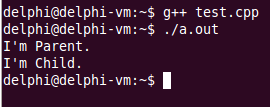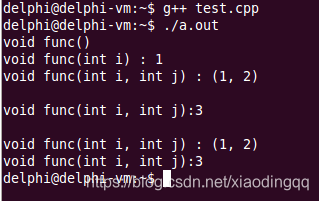C++深度解析 多态的概念和意义 --- virtual,虚函数,静态联编,动态联编
多态
通过使用virtual关键字对多态进行支持
示例程序:
#include <iostream>
#include <string>
using namespace std;
class Parent
{
public:
//print()函数被继承会被重写,多态的行为
virtual void print()
{
cout << "I'm Parent." << endl;
}
};
class Child : public Parent
{
public:
//虚函数
void print()
{
cout << "I'm Child." << endl;
}
};
void how_to_print(Parent* p)
{
p->print(); //展现多态的行为
}
int main()
{
Parent p;
Child c;
how_to_print(&p); // Expected to print:I'm Parent
how_to_print(&c); // Expected to print:I'm Child
return 0;
}
结果如下:

多态的意义:
在程序运行过程中展现出动态的特性
函数重写必须多态实现,否则没有意义
多态是面向对象组件化程序设计的基础特性
静态联编:
在程序的编译期间就能确定具体的函数调用,如:函数重载
动态联编:
在程序实际运行后才能确定具体的函数调用,如:函数重写
示例程序:
#include <iostream>
#include <string>
using namespace std;
class Parent
{
public:
//虚函数
virtual void func()
{
cout << "void func()" << endl;
}
//虚函数
virtual void func(int i)
{
cout << "void func(int i) : " << i << endl;
}
//虚函数
virtual void func(int i, int j)
{
cout << "void func(int i, int j) : " << "(" << i << ", " << j << ")" << endl;
}
};
class Child : public Parent
{
public:
//重写父类的函数,虚函数
void func(int i, int j)
{
cout << "void func(int i, int j):" << i + j << endl;
}
//在Child类里面的两个func()函数,是函数重载
void func(int i, int j, int k)
{
cout << "void func(int i, int j, int k):" << i + j + k << endl;
}
};
//全局函数
void run(Parent* p)
{
//同一行语句展现出不同的调用结果
p->func(1, 2); //展现多台的特性 //动态联编
}
int main()
{
Parent p;
p.func(); //静态联编
p.func(1); //静态联编
p.func(1, 2); //静态联编
cout << endl;
Child c;
c.func(1, 2); //静态联编
cout << endl;
run(&p); //动态联编
run(&c); //动态联编
return 0;
}结果如下:
